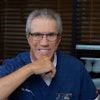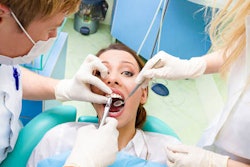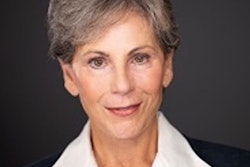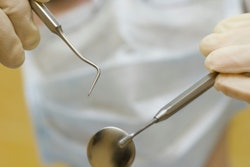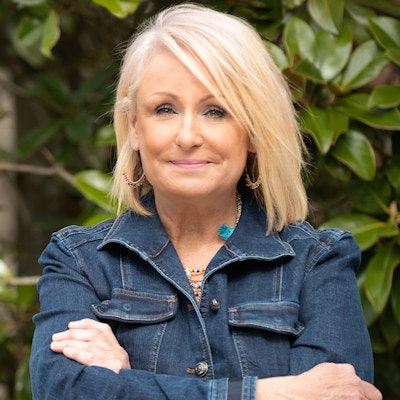
In his 1926 speech, Dr. Alfred Fones, who trained the first dental hygienist, Irene Newman, described a new auxiliary branch in dentistry as "practiced by laywomen" trained for the singular purpose of "cleaning and polishing of teeth" and "limited to the specialty of dental prophylaxis."
In essence, he described dental hygienists as an auxiliary provider whose sole purpose was to perform "mouth sanitation," and this model of care was founded on the outdated belief that "mouth cleanliness" is the sole important determinant of oral health.
 Casey Hein, RDH.
Casey Hein, RDH.While mouth hygiene is a significant cornerstone in oral health, today it is widely recognized that plaque is only one of many host factors that increase the risk for oral diseases. We now know the body's immune response to bacterial plaque is what causes the most damage.
For example, it's estimated that only 20% of the risk of developing periodontitis is plaque related. The lion's share of risk is from modifiable and nonmodifiable risk factors that are genetic, systemic, environmental, and local -- all of which are unrelated to plaque.
This scientific discovery is a significant departure from the original premise that underpinned Fones' concept of what services dental hygienists could provide and the justification for limiting their scope to "cleaning and polishing teeth." We are compelled to rethink oral healthcare providers' scope of practice in light of the evolving body of periodontal-systemic science, discoveries of the sophistication of body microbiomes, and advances in genetics and immunology.
When I consider the state of science in rethinking the dental hygienists' scope of practice, what I've come to is this: There is no justification for limiting dental hygienists and dentists to caring for the oral cavity alone -- we must leverage our knowledge and responsibility as healthcare providers to look beyond the tonsils.
To meet the science, the practice of dental hygiene must evolve to a hybrid oral-systemic primary care model that encompasses holistic health. That means moving away from a largely mechanical to a biologically based therapy model as well as from broad treatment to prevention and personalized intervention through the use of inflammatory biomarkers and saliva- and blood-based genetic assessments.
Given the appropriate education, training, reimbursement mechanisms, and changes to scope of practice, the dental hygienist is the ideal oral health practitioner to implement this model of care.
“There is no justification for limiting dental hygienists and dentists to caring for the oral cavity alone -- we must leverage our knowledge and responsibility as healthcare providers to look beyond the tonsils.”
Would dental hygienists still perform prophylaxis and periodontal treatment under this model? Yes, of course, but services can't stop at the junction between the tongue and tonsils. Services delivered by dental hygienists should extend to primary care services associated with life-altering diseases and conditions -- ones that are exacerbated by poor oral health.
Implementing what we've learned about oral-systemic relationships into everyday practice is a good start, but it's only the beginning. Providing primary care services, which have traditionally been delivered by physicians and nurses, is inevitable.
The introduction of point-of-care technologies in dentistry, such as chairside glucose testing, has opened a new gateway to the medical community for patients to receive treatment for previously undetected noncommunicable and infectious diseases and medical-dental comanagement of poorly controlled chronic conditions.
Now is the time to strategize on how to dismantle the artificial boundaries between oral and overall health and rely on current medical science to inform a reimagined model of care for the dental hygiene profession.
The central question is this: If we let science drive the framework for this reimagined dental hygienist, what would this clinician look like?
Further, in what manner would gridlocks in healthcare delivery, and the utilization of new point-of-care technologies, influence the design? How would this new provider function in a busy dental office, and how would the role increase practice profitability? How would it secure our role as being essential to the primary care medical team? Most importantly, how would it enhance population health outcomes and reduce health-related expenditures?
The practice of dental hygiene must no longer be confined to the oral cavity. My belief is that if we want to be truly recognized as essential members of the primary healthcare team, our profession must move forward with this hybrid oral-systemic primary care model.
Beyond that old fence that separates the mouth from the rest of the body lies an exciting future for dental hygienists and a new practice model that is promising in terms of changing the trajectory of inflammatory-driven, life-altering, chronic diseases.
We can't wait for happenstance change -- we must become the changers and reimagine the role of the dental hygienist in a way that utilizes our profession's full potential.
Casey Hein will present on this topic at the Chicago Dental Society's 156th Midwinter Meeting.
Hein is an internationally recognized speaker and published author and has more than 40 years of experience as a dental hygienist. She is an active advocate for incorporating periodontal-systemic science into everyday patient care, medical-dental collaboration, and point-of-care medical testing in dentistry. She can be reached at [email protected].
The comments and observations expressed herein do not necessarily reflect the opinions of DrBicuspid.com, nor should they be construed as an endorsement or admonishment of any particular idea, vendor, or organization.



